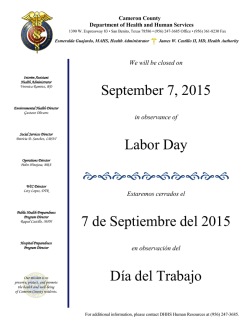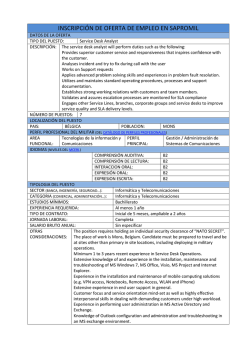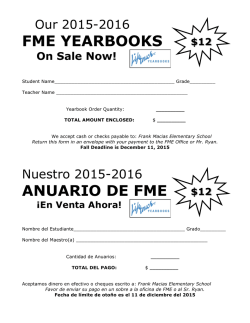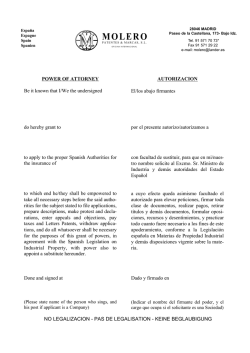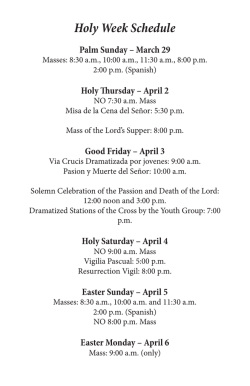
Discovering The World Together - 2016mflafallconference
Discovering The World Together: Educating High School Students Carmen Jaen-Paniza Spanish/Special Educator Independence School Local 1 (Charter) Baltimore City Public Schools [email protected] “Courage doesn't always roar. Sometimes courage is the little voice at the end of the day that says I'll try again tomorrow.” Mary Anne Radmacher Contemporary Author, Artist and professional speaker 1. Connecting with your Students – Get to know your students. – Plan assignments that allow your students to talk about their personal experiences and interests. – Encourage classroom discussions that let students be the center of attention. – Be part of their life as much as you can. Listen to their personal stories. Who are You? http://www.tooloftheweek.org/2011/TOOLS/JTEC41_2_0_whoareyou_tow.pdf 2. Creating a positive atmosphere • • • • • Respect Encourage Praise Share Get feedback http://www.matsuk12.us/cms/lib/AK01000953/Centricity/Domain/2423/pdf/Student_survey_of_Teacher. pdf It is a process… BE CONSISTENT 3. Introducing Cultural Awareness • • • • • Students learn by modeling Cultural diversity Compare and reflect Respect Preparing for life after high school Spanish Speaking Countries http://cmapspublic3.ihmc.us/rid=1GMB91R8D-T7DW9M-C3X/planisferio.jpg Agenda 1. Fecha: 2. Frase del día: 3. Vocabulario del día: 4. Clima/Tiempo: 5. Hora: 6. Trabalenguas: 7. Revisar la clase anterior: 8. Actividad: 9. Tarea: Agenda 2. Frase del día “A caballo regalado, no se le mira el diente” Traducción: Connotación: (http://www.ciudad-real.es/varios/dichos/a.php) Agenda 2. Frase del “A caballo regalado, no se le mira el diente”: día: Traducción: When a horse is given as a present, do not look at the tooth. Connotación: When someone receives any gift or present , must do so without questioning the gift and simply accept it as it is. Cuando alguien recibe cualquier tipo de regalo o presente, debe hacerlo sin cuestionar el obsequio y limitarse a aceptarlo tal como es. La parte final de la locución proviene de la antigua costumbre de revisar la dentadura de los caballos para conocer el estado de salud del animal. (http://www.ciudad-real.es/varios/dichos/a.php) Language and Culture Picture - http://slideplayer.es/slide/1121364/ http://www.dummies.com/how-to/content/knowing-when-to-use-the-spanish-tu-and-usted.html Las Balserías – Tradición indígena Ngäbe-Buglé Comarca – Panamá http://en.wikipedia.org/wiki/Central_America Comarca Ngobe http://www.luventicus.org/mapas/panama/ngobebugle.html http://www.keteka.com/wp-content/uploads/2012/03/Balseria-300x225.jpg •Raspadura http://en.wikipedia.org/wiki/Panela Raspadura • Panela (Spanish pronunciation: [paˈnela], o rapadura [ʁɐpɐˈdu ɾɐ]) is unrefined whole cane sugar, typical of Central and of Latin America in general, which is a solid form of sucrose derived from the boiling and evaporation of sugarcane juice. http://en.wikipedia.org/wiki/Panela South America http://www.circuitosporelmundo.com/destinos/america-del-sur/ •El Mate https://www.flickr.com/photos/redhead_and_wolf/8155040314/ •El Mate Is a traditional South American caffeine-rich infused drink, particularly in Argentina (where it is defined by law as the "national infusion"[), Uruguay, Paraguay and Southern Brazil, and to a lesser degree in southern Chile, the Bolivian Chaco, Syria and Lebanon. It is prepared by steeping dried leaves of yerba mate. http://en.wikipedia.org/wiki/Mate_(beverage) South and Central America http://lorimills.wikispaces.com/Social+Studies+Unit+3 Chicha Fuerte Chicha Fuerte • In some cultures the maize is ground, moistened in the chicha maker's mouth, and formed into small balls, which are then flattened and laid out to dry. Naturally occurring ptyalin enzymes in the maker's saliva catalyses the breakdown of starch in the maize into maltose. • (This process of chewing grains or other starches was used in the production of alcoholic beverages in pre-modern cultures around the world, including, for example, sake in Japan). Adapted from: http://en.wikipedia.org/wiki/Chicha Chicha in a Totuma nuevos-territorios.blogspot.com lexicoon.org La Curandera http://wsfcs.k12.nc.us/Page/362 SPAIN - Europe http://countlessmiles.wordpress.com/2013/03/07/planning-a-euro-trip/ Tapas Españolas http://www.letseat.at/barcelonatapas Tapas • Tapas are a wide variety of appetizers, or snacks, in Spanish cuisine. They may be cold (such as mixed olives and cheese) or hot (such as chopitos, which are battered, fried baby squids). http://en.wikipedia.org/wiki/Tapas South and Central America http://lorimills.wikispaces.com/Social+Studies+Unit+3 El Asado Argentino https://argentinapoloday.wordpress.com/tag/asado/ La Pachamama http://www.haciendoalmas.cult.cu/2014/04/21/desde-arbol-de-vida-22-de-abril-dia-dela-pachamama/ Iemanja http://www.todouruguay.net/historia-y-culto-de-iemanja/ February 2nd - Uruguay http://www.todouruguay.net/historia-y-culto-de-iemanja/ Kuna http://losabalorios.com/blog/2012/06/molas-kunas-la-artesania-en-tela-de-panama/ Molas http://losabalorios.com/blog/2012/06/molas-kunas-la-artesania-en-tela-de-panama/ Song "Cielito lindo" is a popular Mexican song from a Spanish copla, popularized in 1882 by Quirino Mendoza y Cortés (c. 1859–1957) http://en.wikipedia.org/wiki/Cielito_Lindo http://remigiosol.wordpress.com/2013/04/18/cielito-lindo-2013/ Don Quijote y Sancho Panza http://www.equipoagora.es/Santiago-Arellano/Que-hace-aqui-Don-Quijote.htm Bibliography • Milner IV, H. Richard. “Five Easy Ways to Connect with Students” HTTP://HEPG.ORG/HELHOME/ISSUES/27_1/HELARTICLE/FIVE-EASY-WAYS-TO-CONNECT-WITHSTUDENTS_492 • Coffey, Heather. “Modeling” HTTP://WWW.LEARNNC.ORG/LP/PAGES/4697 Invite Q&A Contact Information Carmen Jaen-Paniza [email protected]
© Copyright 2025
